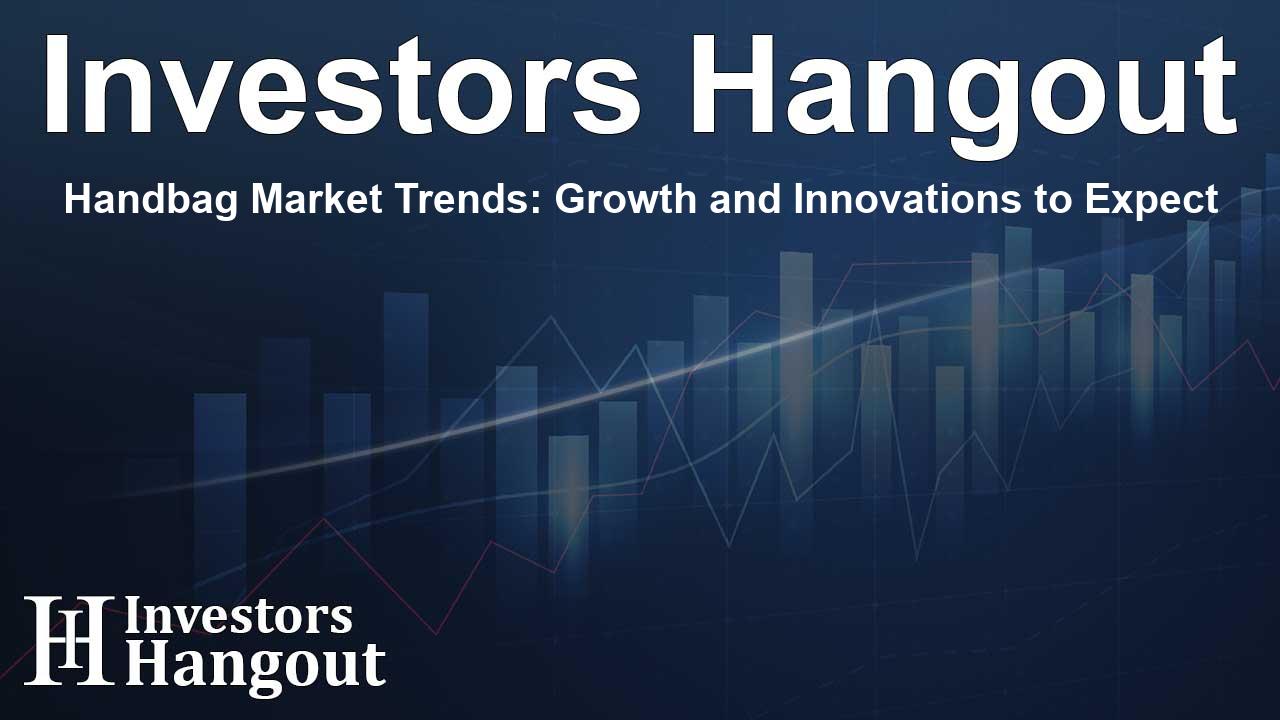Handbag Market Trends: Growth and Innovations to Expect

The Flourishing Handbag Market: An Overview
Handbags have become essential accessories in today's fashion landscape, appealing to diverse demographics. Thanks to their versatility and expanding functionality, they are more prominent now than ever. Handbags serve various purposes for different occasions—canvas handbags are favored for shopping expeditions, leather bags cater to the professional realm, while women often opt for elegant clutches and wristlets that add refinement to special events.
Market Demand: A Surge in Popularity
The rise of premium, lightweight, and luxury handbags significantly shapes the market. Leather, being a preferred material, outshines alternatives such as fabric and nylon in terms of desirability. Renowned brands like Hermès International S.A., Louis Vuitton, and Gucci are known for their exquisite leather handbags, fostering a sense of exclusivity among consumers. Lightweight designs are also increasingly sought after for their comfort, especially crafted from innovative materials like Dyneema and neoprene. This preference growth can largely be attributed to increasing disposable income, allowing consumers to indulge in higher-end products.
Technology Meets Fashion: A Game-Changer
Innovation is crucial in maintaining a competitive edge within the handbag industry. Manufacturers are investing in research and development to bring forth cutting-edge designs that cater to modern needs. A noteworthy example is the introduction of "Phone Mini Bags" by Celine, innovatively allowing users to listen to music without removing their phones from the bag. This kind of technological integration paves the way for exciting opportunities in market expansion moving forward.
Regional Insights: North America and Asia-Pacific on the Rise
In terms of market shares, North America emerges as a leader, with expected growth of 5.50% CAGR. The influence of the fashion industry resonates with consumers here, driving handbag popularity. Additionally, the steady entry and growth of foreign brands have allowed North American handbags to gain momentum.
Asia-Pacific: A Booming Market
Meanwhile, the Asia-Pacific region is projected to witness an impressive CAGR of 7.30%, generating substantial revenue during the forecast period. Increased online shopping engagement and a surge in consumer spending have spurred handbag demand. Notably, sales in this region soared by 261% between 2019 and 2020, illustrating a robust market dynamic.
Key Market Segments to Watch
The global handbag market is diverse, consisting of segments like tote bags, clutches, and satchels, with tote bags leading in contributions. Leather continues to dominate in material preference, commanding a significant market share and projected growth of 6.60% CAGR. Furthermore, distribution channels are bifurcated into online and offline, with offline sales taking the lead.
Competitive Landscape: Key Players
The handbag market showcases prominent players including Louis Vuitton, Hermès International S.A, and Prada S.p.A, among others. Each brand continues to innovate and release new products catered to evolving consumer trends and preferences.
Recent Trends and Innovations
In a recent development, a fashionable collection was launched in India by Charles & Keith, celebrating the World Cup season with sporty handbags. Likewise, Dior made headlines with a unique collaboration with Harrods, showcasing its design prowess.
Conclusion: A Bright Outlook for the Handbag Market
The handbag market is poised for remarkable insights and developments in the coming years. A combination of innovative designs, technological advancements, and an increasing demand for luxury and functional items are likely to drive this industry forward. As trends evolve, brands must remain agile and responsive to consumer preferences to harness the full potential of this vibrant market.
Frequently Asked Questions
What are the main drivers of growth in the handbag market?
The growth is largely driven by rising disposable income, increasing demand for premium luxury goods, and innovation in handbag designs.
Which regions are leading in the handbag market?
North America and the Asia-Pacific regions are significant leaders in the handbag market, exhibiting high growth rates and consumer engagement.
What materials are most popular for handbags?
Leather remains the most sought-after material for handbags, preferred for its quality and durability, alongside innovative synthetic materials.
How is technology influencing handbag designs?
Brands are integrating technology into handbag designs to enhance functionality, such as allowing users to listen to music without removing their phones.
Who are the key players in the handbag market?
Notable players in the handbag market include Louis Vuitton, Hermès International S.A, Michael Kors, and Prada, among others.
About The Author
Contact Thomas Cooper privately here. Or send an email with ATTN: Thomas Cooper as the subject to contact@investorshangout.com.
About Investors Hangout
Investors Hangout is a leading online stock forum for financial discussion and learning, offering a wide range of free tools and resources. It draws in traders of all levels, who exchange market knowledge, investigate trading tactics, and keep an eye on industry developments in real time. Featuring financial articles, stock message boards, quotes, charts, company profiles, and live news updates. Through cooperative learning and a wealth of informational resources, it helps users from novices creating their first portfolios to experts honing their techniques. Join Investors Hangout today: https://investorshangout.com/
The content of this article is based on factual, publicly available information and does not represent legal, financial, or investment advice. Investors Hangout does not offer financial advice, and the author is not a licensed financial advisor. Consult a qualified advisor before making any financial or investment decisions based on this article. This article should not be considered advice to purchase, sell, or hold any securities or other investments. If any of the material provided here is inaccurate, please contact us for corrections.
